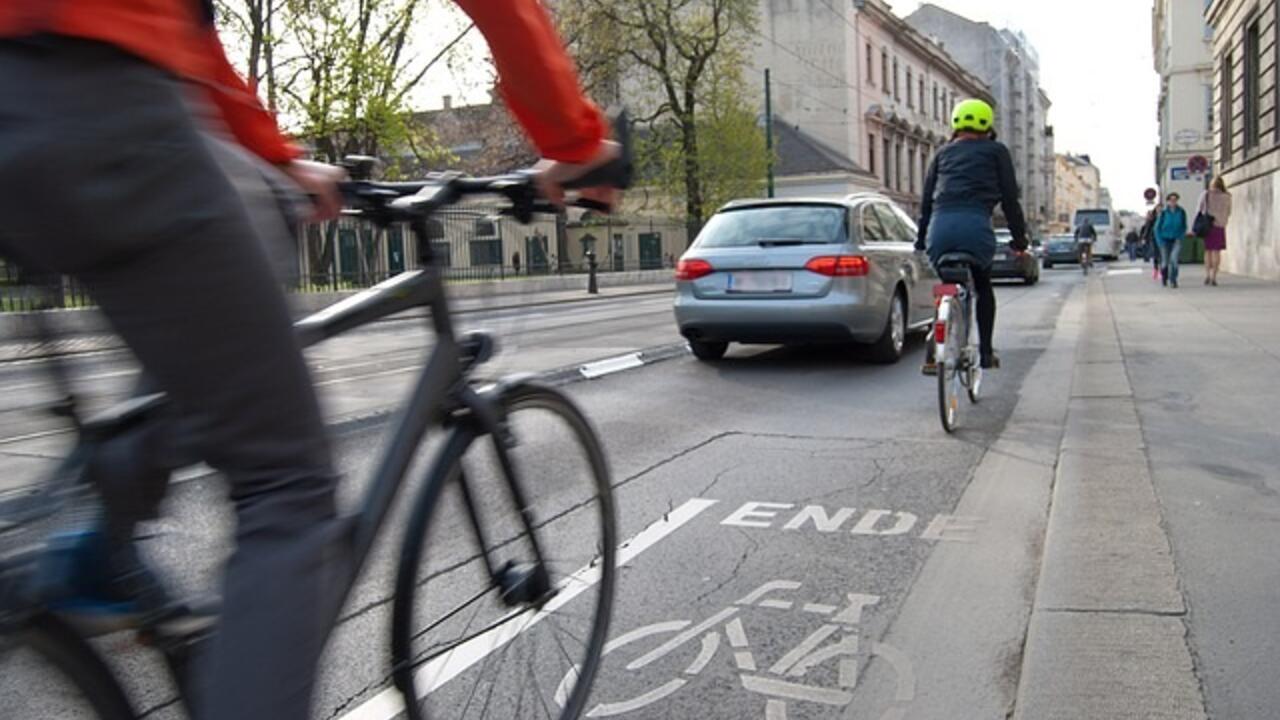
Aiming to improve cycling safety, comfort with bike lanes
Researchers at Waterloo Engineering are developing a new virtual tool that could help planners choose the best places to install bikes lanes in cities

Researchers at Waterloo Engineering are developing a new virtual tool that could help planners choose the best places to install bikes lanes in cities
By Brian Caldwell Faculty of EngineeringResearchers at Waterloo Engineering are developing a new virtual tool that could help planners choose the best places to install bikes lanes in cities.
The data-based tool builds on a field study that validated the safety benefits of bike lanes for cyclists and motorists.
Collected using sensors and a handlebar camera as researchers cycled hundreds of kilometres in Kitchener-Waterloo, the data showed bike lanes virtually eliminate vehicles getting too close to cyclists when they pass them.

Bruce Hellinga
“Drivers aren’t trying to scare cyclists or be inconsiderate,” said Bruce Hellinga, a civil and environmental engineering professor. “In many cases, they just don’t feel they can leave more space because of the geometry of the road and the proximity of other vehicles."
On two-lane roads without bike lanes, passing motorists got within a metre of cyclists 12 per cent of the time. With bike lanes, that number dropped to just .2 per cent.
On four-lane roads, unsafe passing dropped from almost six per cent with no bike lanes to .5 per cent with bikes lanes.
One metre of separation was used to distinguish safe passing from unsafe passing in the study because it is a legal requirement in some jurisdictions in North America.
The data is now being used to develop a transferrable software tool that predicts the number of unsafe passes on roads based on factors including traffic volume and flow.
That would help urban planners determine where bike lanes and other cycling infrastructure would be most beneficial.
“It’s not about giving something to cyclists and taking something away from motorists,” Hellinga said. “It’s about putting in infrastructure to reduce stress levels and improve safety for both.”
The research was motivated by Hellinga’s own experiences cycling to work at Waterloo on busy University Avenue.
“I got frustrated by what I perceived as vehicles getting too close to me,” Hellinga said. “You feel very vulnerable when a vehicle comes within what feels like mere centimetres.”
In addition to improving safety, bike lanes make cyclists more comfortable and therefore more likely to cycle, an activity encouraged by municipalities for its health and environmental benefits.
Hellinga collaborated with graduate student Kushal Mehta and former postdoctoral fellow Babak Mehran.
Their paper on a predictive model, A methodology to estimate the number of unsafe vehicle-cyclist passing events on urban arterials, appears in the journal Accident Analysis and Prevention.

Engineering master's student Nayeema Nonta (left), one of the three paper authors, and her supervisor, Dr. Sirisha Rambhatla, in a large server room with the computer power needed to develop their new LLM training technique. (University of Waterloo)
Read more
Waterloo researchers develop highly efficient AI training system that paves the way for cheaper, greener “intelligent partners”

Read more
Engineering researchers team up to tackle the plastics pollution problem with microbial innovation and engineering design

Read more
15 University of Waterloo researchers have been named to the annual Highly Cited Researchers™ list for significant contributions to their specific fields of research
The University of Waterloo acknowledges that much of our work takes place on the traditional territory of the Neutral, Anishinaabeg, and Haudenosaunee peoples. Our main campus is situated on the Haldimand Tract, the land granted to the Six Nations that includes six miles on each side of the Grand River. Our active work toward reconciliation takes place across our campuses through research, learning, teaching, and community building, and is co-ordinated within the Office of Indigenous Relations.